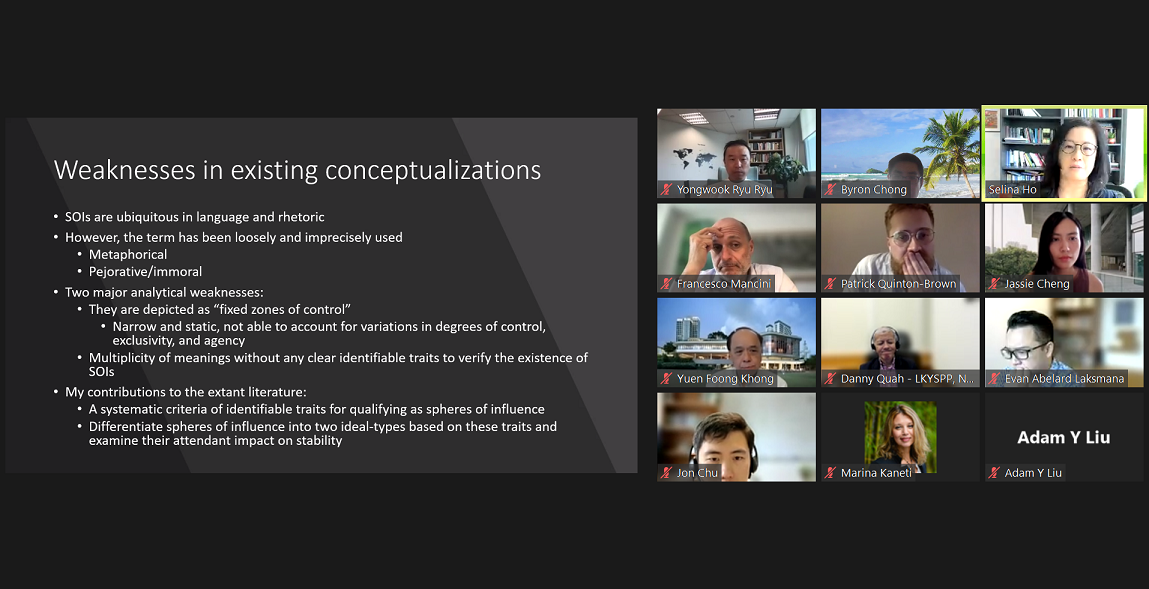
The intensification of great power rivalry has revived the long-standing debate on spheres of influence. In these debates, the term “spheres of influence” has been under-theorized and under-specified. In this paper, the presenter, Dr. Selina Ho, unpacks and defines the concept incorporating both its material and ideational qualities. A sphere of influence is a spatial construct of hierarchical order in which a great power exercises control over the internal politics, security, economy, and norms and culture of a group of secondary states to the extent that rival great powers are partially or completely excluded. She argues that spheres of influence vary and evolve over time and space. By recognizing that spheres of influence are fluid and categorizing them on a spectrum, the concept's analytical value increases as it becomes possible to analyze influence, sovereignty, and the impact on stability across a range of hierarchical orders that are found in spheres of influence. Based on seven categories, Dr. Ho identify and differentiates two ideal-types spheres of influence: coercive and associational. Real-world spheres of influence are situated along this coercive-associational spectrum. Applying these theoretical findings, she argues that the United States has an associational sphere of influence in East Asia comprising Japan, South Korea, and Taiwan. The sphere is largely stable despite member states’ assertions of independence and close economic ties with China in the post-Cold War era.